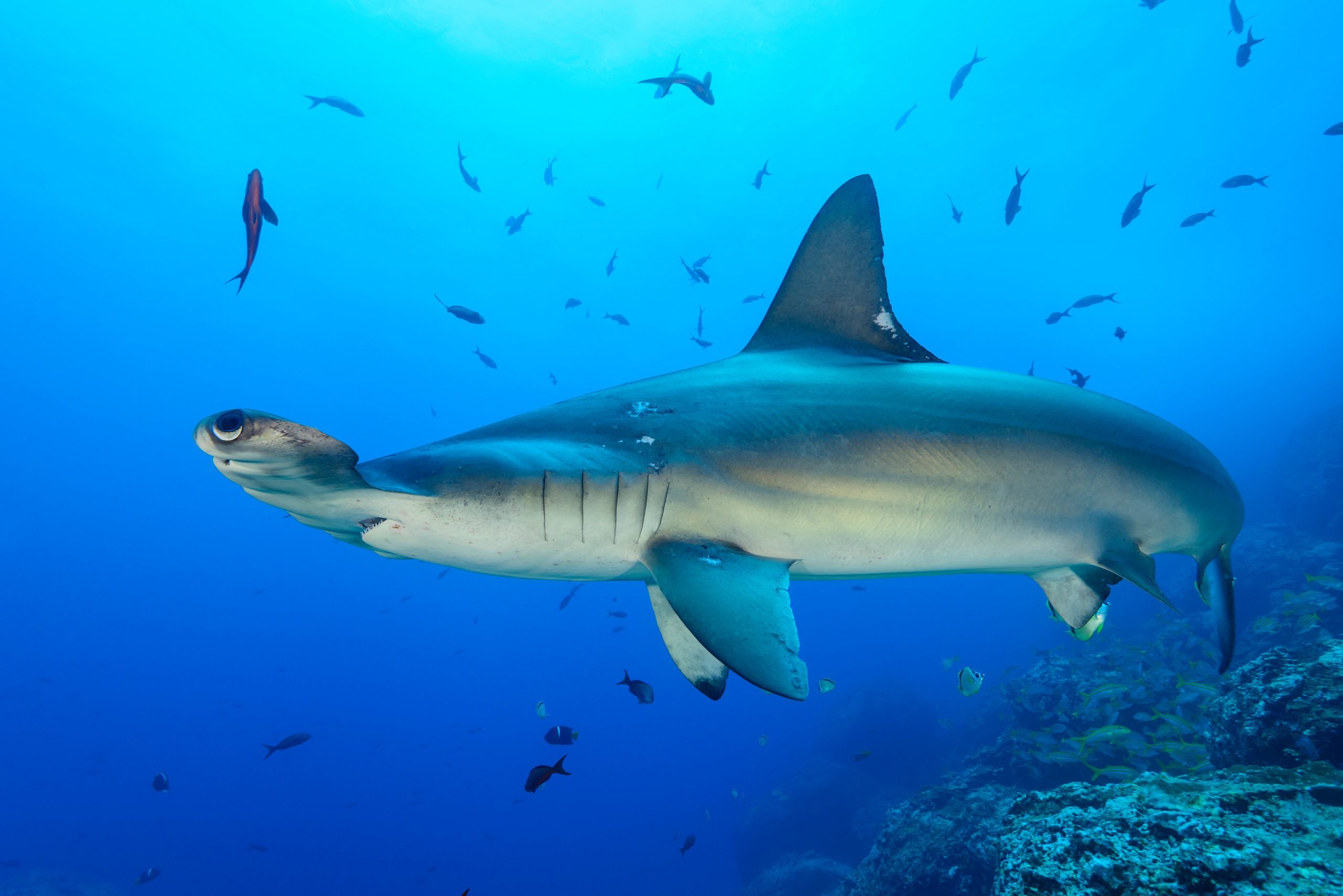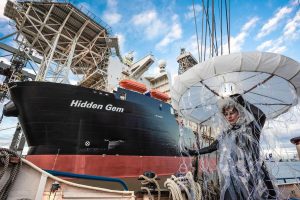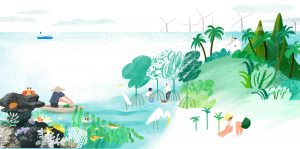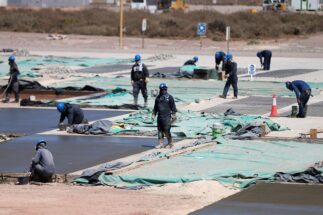Forty years ago, William Carrión began going out to fish in a small boat at dawn near the city of Puntarenas in Costa Rica. His competition was out early with him: a parade of grey fins stalking underwater fish.
“I was never scared. I was throwing out the fishing line while three or four sharks surrounded the boat. Many animals were seen here before – dolphins, whales, everything,” the artisanal fisher recalls.
Over time, the fins stopped accompanying him and, in their place, semi-industrial fishing fleets began to populate the waters. The sea became lonelier, Carrión says, and his snapper catch fell.
Today, despite the fact that Costa Rica is home to endangered species such as the hammerhead shark (Sphyrna lewini, Sphyrna mokarran) and the silky shark (Carcharhinus falciformis), the country continues to legally fish thousands of these animals every year.
To be resilient, the sea has to be complete. It has to have healthy ecosystems. In an ecosystem without sharks, the sea will not be able to adaptRandall Aráuz, scientific adviser to Marine Watch International
Data disclosed to China Dialogue Ocean by the Costa Rican Institute of Fisheries and Aquaculture (Incopesca), shows that between 2015 and 2019 an average of around 7,000 hammerhead sharks were landed in Costa Rican ports each year.
Even though two of the three species of hammerhead shark present in Costa Rican waters are in critical danger of extinction, their fishing is legal in the country. The silky shark is even considered a “species of fishing interest” under current Incopesca regulations.
Incopesca data also shows that, over time, there has been a reduction in shark catches – an alarming sign that the populations could be in a delicate situation, according to marine biologist and conservationist Randall Aráuz, scientific adviser to Marine Watch International.
The scientist warned that if shark populations collapse, then the entire ecosystem could follow, since the apex predators play a role in regulating the food chain.
This has been documented on coral reefs in Australia, for example. At sites where sharks were overfished, lesser predators increased and herbivorous fish decreased, leaving the algae to consume the corals.
“To be resilient, the sea has to be complete. It has to have healthy ecosystems. In an ecosystem without sharks, the sea will not be able to adapt,” said Aráuz.
Globally, overfishing is the main threat to sharks and rays, according to a 2021 study, driving one-third of all their species towards extinction. In Costa Rica, over half of the 99 shark and ray species present are threatened with extinction.
Carrión also testifies to a decrease in shark sightings while fishing: “This sea is in intensive care, but the government does not want to understand that.”
An appetite for sharks
For many years, Costa Rican fisheries were artisanal and low-tech, until in the 1980s the country signed a cooperation agreement with Taipei, which helped to industrialise the nation’s fisheries.
Semi-industrial boats were traded in for bigger ones and people began to fish with longer lines, which function as a kind of “backbone” from which rows of hooks descend into the depths, allowing for larger catch of species such as tuna and dorado (mahi-mahi).
But being non-selective equipment, they also became something of a collateral magnet for shark fins, explains Mario Espinoza, an ocean researcher at the University of Costa Rica.
In Costa Rica, shark fins were not a particularly popular product, but China and Thailand began to import them on a greater scale for consumption in soups. Over time, this demand dwindled, but the sharks were on the verge of collapse.
After a significant drop in the populations of these animals, Costa Rica timidly limited finning in 2001, saying that all captured sharks must arrive at port with their fins attached.
By 2012, the country banned the import and export of shark fins, but not domestic consumption. Most of the Taipei-flagged fleet left the country, but the Costa Rican longline fleet continued to fish for sharks.
Currently, Incopesca data shows that the longline fleet caught 85% of the sharks at risk between 2015 and 2019. These are usually caught incidentally and their meat is sold in coastal areas under a different name such as “bolillo” or “dogfish”, Espinoza explained.
In light of these declines and pressure from the fin trade, three species of hammerhead were listed under CITES in 2013, meaning they can only be traded internationally with permits that declare the take to have been legal and sustainable. Listing of the silky shark followed in 2017.
Even so, a few years later, Costa Rica approved an extraction ruling in 2020 that allows it to continue fishing and even export the silky shark. The hammerhead ruling allows domestic fishing but prohibits export.
The appetite of the Costa Rican fisheries for the silky shark is particularly voracious. Between 2015 and 2019, on average the country landed more than 180,000 trunks of these sharks per year, about 24 times the number of hammerheads caught.
Despite the fact that the silky shark has been showing signs of deterioration, “in Costa Rica it continues to be caught and absolutely nothing is done,” said Aráuz.
Stopping the capture
Although both championed a marine conservation discourse, former presidents Luis Guillermo Solís (2014–2018) and Carlos Alvarado (2018–2022) classified hammerheads as a species of commercial interest and, in the case of the silky, even allowed for their export.
“Currently you can buy hammerhead shark ceviche. That’s like being sold jaguar paws or wings of a quetzal bird,” said Aráuz. “This, moreover, has the blessing of Incopesca and the complicity of the Ministry of Environment.”
In an attempt to reverse this decision, in 2019 legislators from various Costa Rican parties presented a bill (no. 21,754) that would prohibit classifying marine species listed on CITES appendices as being of fishing interest.
Despite the pressure for its approval, including public marches, the bill was never voted on and remains in the legislative arena. Currently, the government of Rodrigo Chaves, whose election as president has brought uncertainty on environmental issues, has excluded the proposed measure from its list of priority projects, and has not made any mention of the issue.
Out on the water, the growing rejection of shark fishing has served to mobilise the fishing sector itself, Espinoza assured. In 2021, about half of the active vessels in the longline sector adopted a commitment to release all hammerhead sharks caught in their operations.
Even so, both Espinoza and Aráuz indicated that the country requires more scientific research in order to inform and guarantee the protection of these shark species. Closures could be established in critical areas for their reproduction, while better information on minimum sizes could help avoid the capture of juvenile sharks.
“At the moment, Costa Rica does not have the academic or scientific capacity to manage this fishery and, above all, it does not have the political will to manage this fishery,” Aráuz concluded.
The CITES global meeting, COP19, being held in Panama from 14-25 November, could lead to changes in shark protection. Brazil, Colombia, Ecuador, the European Union and hosts Panama have proposed to include all hammerhead shark species of the family Sphyrnidae in the Appendix II category, which would regulate international trade, with permits required to show specimens were legally and sustainably acquired.








